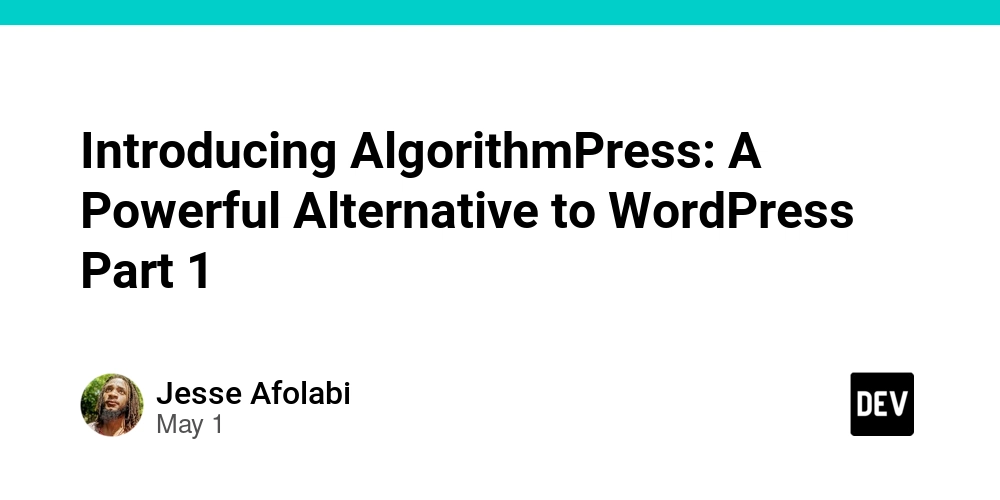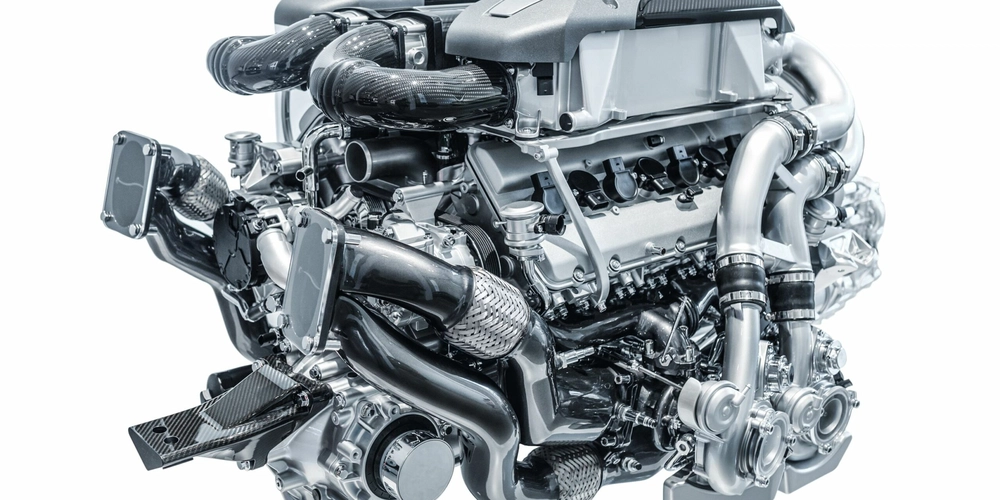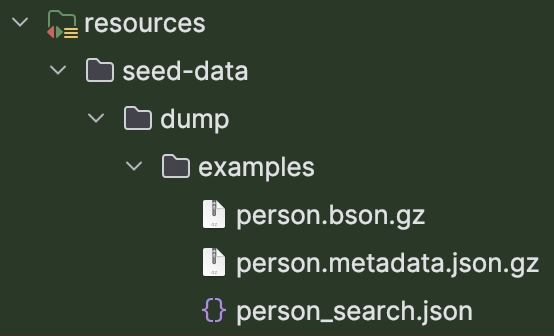Introducing AlgorithmPress: A Powerful Alternative to WordPress Part 1
In the evolving landscape of content management systems, AlgorithmPress emerges as a compelling alternative to WordPress, offering a fresh approach to web development that addresses many of the limitations found in traditional platforms. Breaking Free from Traditional CMS Constraints WordPress has long dominated the CMS market, but its architecture, which relies heavily on plugins and themes, can lead to compatibility issues, performance bottlenecks, and security vulnerabilities. AlgorithmPress takes a fundamentally different approach with its micro-module architecture and browser-based development environment. Key Advantages Over WordPress Browser-Based Development: AlgorithmPress runs entirely in your browser powered by PHP-WASM, eliminating the need for server configuration and maintenance. Intuitive Visual Builder: Create complex layouts without diving into code, using a more intuitive interface than WordPress's block editor. Plugin-augmented Experience: Instead of a traditional plugin experience that can conflict with each other, AlgorithmPress uses a composable component system where features work seamlessly together. Decentralized Hosting: Leverage distributed storage technology for enhanced security and performance, moving beyond traditional hosting limitations. Performance Focus: Built with modern web standards, ensuring fast loading times without extensive optimization. Intelligent Design and Publishing While WordPress requires significant customization to implement AI features, AlgorithmPress offers integrated intelligence: AI-Powered Content Creation: Generate high-quality content drafts and receive optimization suggestions (coming soon). Design Intelligence: Get smart recommendations for layouts, typography, and color schemes based on your content. Automated Workflows: Create complex content workflows with an intuitive visual editor, making automation accessible. Micro Module Architecture: A Developer's Dream For developers frustrated with WordPress's legacy codebase and inconsistent developer experience, AlgorithmPress's architecture offers: Composable Components: Build exactly what you need by combining simple, reusable modules. Modern Technology Stack: Utilizing PHP-WASM, Nuejs, and other cutting-edge technologies for better performance and development experience. Extensibility Without Compromise: Extend functionality with custom modules using PHP, JavaScript, or the visual editor without worrying about compatibility issues. Who Should Consider AlgorithmPress? Perfect for: Content creators seeking a more intuitive publishing experience Developers tired of WordPress's plugin conflicts and maintenance overhead Businesses requiring custom workflows that don't fit WordPress's model Projects needing better performance without extensive optimization Teams looking for a more collaborative development environment Coming Soon: AlgorithmPress is actively developing its app ecosystem, with full implementation expected within the next three months. This will further enhance the platform's capabilities through vetted, compatible extensions that don't compromise performance or security. Understanding AlgorithmPress's Micro Module Architecture: A Developer's Guide As developers, we're constantly seeking ways to build more maintainable, scalable, and efficient web applications. Traditional CMS platforms like WordPress have served us well, but their monolithic architecture and exclusively plugin-dependency model increasingly show limitations in today's rapidly evolving web landscape. AlgorithmPress introduces a paradigm shift with its micro module architecture that deserves a closer technical examination. The Problem with WordPress's Architecture WordPress's architecture revolves around a monolithic core extended through a plugin ecosystem. This approach has several inherent drawbacks: Plugin Dependency Hell: Plugins often conflict with each other or break during core updates, creating maintenance nightmares. Tight Coupling: The core is tightly coupled with the database schema, making significant architectural changes difficult. Performance Overhead: Each plugin adds its own CSS, JavaScript, and database queries, often leading to performance degradation. Security Surface Area: Each additional plugin expands the potential attack surface. AlgorithmPress's Micro Module Approach AlgorithmPress addresses these issues through a fundamentally different architectural approach: 1. PHP-WASM as the Foundation AlgorithmPress leverages PHP-WASM, allowing PHP code to run directly in the browser without server-side execution. This creates several advantages: // Example of how PHP-WASM handles execution const phpWasm = new PHPWASM(); phpWasm.run(``); This browser-based execution model eliminates the need for server configuration, reduces deployment complexity, and enhances security by removing server v

In the evolving landscape of content management systems, AlgorithmPress emerges as a compelling alternative to WordPress, offering a fresh approach to web development that addresses many of the limitations found in traditional platforms.
Breaking Free from Traditional CMS Constraints
WordPress has long dominated the CMS market, but its architecture, which relies heavily on plugins and themes, can lead to compatibility issues, performance bottlenecks, and security vulnerabilities. AlgorithmPress takes a fundamentally different approach with its micro-module architecture and browser-based development environment.
Key Advantages Over WordPress
- Browser-Based Development: AlgorithmPress runs entirely in your browser powered by PHP-WASM, eliminating the need for server configuration and maintenance.
- Intuitive Visual Builder: Create complex layouts without diving into code, using a more intuitive interface than WordPress's block editor.
- Plugin-augmented Experience: Instead of a traditional plugin experience that can conflict with each other, AlgorithmPress uses a composable component system where features work seamlessly together.
- Decentralized Hosting: Leverage distributed storage technology for enhanced security and performance, moving beyond traditional hosting limitations.
- Performance Focus: Built with modern web standards, ensuring fast loading times without extensive optimization.
Intelligent Design and Publishing
While WordPress requires significant customization to implement AI features, AlgorithmPress offers integrated intelligence:
- AI-Powered Content Creation: Generate high-quality content drafts and receive optimization suggestions (coming soon).
- Design Intelligence: Get smart recommendations for layouts, typography, and color schemes based on your content.
- Automated Workflows: Create complex content workflows with an intuitive visual editor, making automation accessible.
Micro Module Architecture: A Developer's Dream
For developers frustrated with WordPress's legacy codebase and inconsistent developer experience, AlgorithmPress's architecture offers:
- Composable Components: Build exactly what you need by combining simple, reusable modules.
- Modern Technology Stack: Utilizing PHP-WASM, Nuejs, and other cutting-edge technologies for better performance and development experience.
- Extensibility Without Compromise: Extend functionality with custom modules using PHP, JavaScript, or the visual editor without worrying about compatibility issues.
Who Should Consider AlgorithmPress?
Perfect for:
- Content creators seeking a more intuitive publishing experience
- Developers tired of WordPress's plugin conflicts and maintenance overhead
- Businesses requiring custom workflows that don't fit WordPress's model
- Projects needing better performance without extensive optimization
- Teams looking for a more collaborative development environment
Coming Soon:
AlgorithmPress is actively developing its app ecosystem, with full implementation expected within the next three months. This will further enhance the platform's capabilities through vetted, compatible extensions that don't compromise performance or security.
Understanding AlgorithmPress's Micro Module Architecture: A Developer's Guide
As developers, we're constantly seeking ways to build more maintainable, scalable, and efficient web applications. Traditional CMS platforms like WordPress have served us well, but their monolithic architecture and exclusively plugin-dependency model increasingly show limitations in today's rapidly evolving web landscape. AlgorithmPress introduces a paradigm shift with its micro module architecture that deserves a closer technical examination.
The Problem with WordPress's Architecture
WordPress's architecture revolves around a monolithic core extended through a plugin ecosystem. This approach has several inherent drawbacks:
- Plugin Dependency Hell: Plugins often conflict with each other or break during core updates, creating maintenance nightmares.
- Tight Coupling: The core is tightly coupled with the database schema, making significant architectural changes difficult.
- Performance Overhead: Each plugin adds its own CSS, JavaScript, and database queries, often leading to performance degradation.
- Security Surface Area: Each additional plugin expands the potential attack surface.
AlgorithmPress's Micro Module Approach
AlgorithmPress addresses these issues through a fundamentally different architectural approach:
1. PHP-WASM as the Foundation
AlgorithmPress leverages PHP-WASM, allowing PHP code to run directly in the browser without server-side execution. This creates several advantages:
// Example of how PHP-WASM handles execution
const phpWasm = new PHPWASM();
phpWasm.run(` 'success'];
echo json_encode($result);
?>`);
This browser-based execution model eliminates the need for server configuration, reduces deployment complexity, and enhances security by removing server vulnerabilities.
2. Composable Component System
Unlike WordPress's plugin model, AlgorithmPress uses a composable component system where each module:
- Has a clearly defined API and responsibility
- Maintains isolation from other components
- Can be combined with other components without conflicts
- Follows consistent patterns for state management and data flow
// Example of a composable AlgorithmPress component
class ContentDisplay implements Module {
private $dataProvider;
public function __construct(DataProvider $provider) {
// Dependency injection rather than global state
$this->dataProvider = $provider;
}
public function render() {
$data = $this->dataProvider->getData();
// Component rendering logic
}
// Clear, defined lifecycle methods
public function onMount() {}
public function onUpdate() {}
public function onUnmount() {}
}
3. Event-Driven Communication
AlgorithmPress implements an event bus for inter-component communication:
// Components communicate through events rather than direct references
APEventBus.subscribe('content.updated', (data) => {
// Handle content update
});
// Publishing events
APEventBus.publish('content.updated', { id: 123, title: 'Updated Title' });
This pattern reduces coupling between components and enables a more flexible system where components can be added or removed without breaking others.
4. Unified State Management
Unlike WordPress, which relies on disparate state management approaches across plugins, AlgorithmPress provides a unified state management system:
// Centralized state management with reactive updates
const state = APState.create({
content: {
items: [],
isLoading: false,
error: null
}
});
// Components can subscribe to state changes
APState.subscribe('content.items', (newItems) => {
// Update UI based on new items
});
// Mutations happen through actions
APState.dispatch('content/fetchItems');
This creates predictable data flow and easier debugging, unlike WordPress's mix of global variables, options tables, and transients.
Real-World Development with AlgorithmPress
For developers accustomed to WordPress, the transition to AlgorithmPress requires a shift in thinking but offers significant benefits:
Module Development Workflow
- Define Your Module's Interface: Start by clearly defining what your module does and how it interfaces with others.
- Create Components: Build the UI components that will render your module's functionality.
- Implement Business Logic: Separate business logic from UI components.
- Register with the System: Register your module with the AlgorithmPress system.
// Registering a module with AlgorithmPress
APRegistry::registerModule('content-analyzer', [
'name' => 'Content Analyzer',
'description' => 'Analyzes content for SEO optimization',
'version' => '1.0.0',
'components' => [
'analyzer' => ContentAnalyzer::class,
'recommendations' => RecommendationPanel::class
],
'hooks' => [
'content.save' => ['analyzer', 'analyzeContent'],
'editor.sidebar' => ['recommendations', 'render']
]
]);
Advantages in the Development Lifecycle
- Easier Testing: Isolated components are simpler to test.
- Clearer Responsibilities: Each module has well-defined boundaries.
- Reduced Regression Risk: Changes to one module are less likely to break others.
- Better Performance Management: Performance bottlenecks are easier to identify and isolate.
The Near Future: App Ecosystem
Within the next three months, AlgorithmPress will roll out its full app ecosystem, bringing:
- App Marketplace: A curated marketplace for AlgorithmPress modules with strict quality standards.
- Developer Portal: Comprehensive documentation, tools, and APIs for module development.
- Module Versioning: Sophisticated versioning system to manage dependencies and updates.
- Analytics SDK: Tools for monitoring module performance and usage.
Conclusion
AlgorithmPress's micro module architecture represents a significant advancement over WordPress's plugin-based approach. By embracing modern architectural patterns, browser-based execution, and composable design principles, it offers developers a more maintainable, scalable, and efficient platform for web development.
The learning curve may be steep for developers deeply entrenched in the WordPress ecosystem, but the benefits in terms of reduced maintenance burden, improved performance, and enhanced development experience make it a compelling alternative worth considering for your next web project.
AlgorithmPress represents a paradigm shift in web development and content management. By combining browser-based technology, intelligent design features, and a flexible module system, it offers a compelling alternative to WordPress that's worth considering for your next project.
Whether you're a developer seeking more control and fewer headaches, or a content creator looking for a more intuitive publishing experience, AlgorithmPress delivers a fresh approach that addresses many of WordPress's longstanding limitations.
To learn more about AlgorithmPress, visit AlgorithmPress.com and you can use the app directly at AlgorithmPress.com/app
Visit the Github at https://github.com/Jesse-wakandaisland/AlgorithmPress

















































_courtesy_VERTICAL.jpg)





















































































































![[The AI Show Episode 145]: OpenAI Releases o3 and o4-mini, AI Is Causing “Quiet Layoffs,” Executive Order on Youth AI Education & GPT-4o’s Controversial Update](https://www.marketingaiinstitute.com/hubfs/ep%20145%20cover.png)






























































































































![[DEALS] Mail Backup X Individual Edition: Lifetime Subscription (72% off) & Other Deals Up To 98% Off – Offers End Soon!](https://www.javacodegeeks.com/wp-content/uploads/2012/12/jcg-logo.jpg)













































































































































_Andreas_Prott_Alamy.jpg?width=1280&auto=webp&quality=80&disable=upscale#)
















































































































![Apple Ships 55 Million iPhones, Claims Second Place in Q1 2025 Smartphone Market [Report]](https://www.iclarified.com/images/news/97185/97185/97185-640.jpg)






































































































